- Home
- Ursula K. Le Guin
A Fisherman of the Inland Sea: Stories
A Fisherman of the Inland Sea: Stories Read online
The story tells of a poor fisherman, Urashima, who went out daily in his boat alone on the quiet sea that lay between his home island and the mainland. He was a beautiful young man with long, black hair, and the daughter of the king of the sea saw him as he leaned over the side of the boat and she gazed up to see the floating shadow cross the wide circle of the sky.
Rising from the waves, she begged him to come to her palace under the sea with him. At first he refused, saying, “My children wait for me at home.” But how could he resist the sea king’s daughter? “One night,” he said. She drew him down with her under the water, and they spent a night of love in her green palace, served by strange undersea beings. Urashima came to love her dearly, and maybe he stayed more than one night only. But at last he said, “My dear, I must go. My children wait for me at home.”
“If you go, you go forever,” she said.
“I will come back,” he promised.
Also by Ursula K. Le Guin in Vista
CITY OF ILLUSIONS
FOUR WAYS TO FORGIVENESS
URSULA K. LE GUIN
A FISHERMAN OF
THE INLAND SEA
ACKNOWLEDGMENTS
“Introduction,” copyright © 1994 by Ursula K. Le Guin.
“The First Contact with Gorgonids,” copyright © 1991 by Ursula K. Le Guin; first appeared in Omni.
“Newton’s Sleep,” copyright © 1991 by Ursula K. Le Guin; first appeared in Full Spectrum 3.
“The Ascent of the North Face,” copyright © 1983 by Ursula K. Le Guin; first appeared in Isaac Asimov’s Science Fiction Magazine.
“The Rock That Changed Things,” copyright © 1992 by Ursula K. Le Guin; first appeared in Amazing.
“The Kerastion,” copyright © 1990 by Ursula K. Le Guin; first appeared in Westercon 1990 Program Book.
“The Shobies’ Story,” copyright © 1990 by Ursula K. Le Guin; first appeared in Universe.
“Dancing to Ganam,” copyright © 1993 by Ursula K. Le Guin; first appeared in Amazing.
“Another Story” or “A Fisherman of the Inland Sea,” copyright © 1994 by Ursula K. Le Guin; first appeared in Tomorrow.
Contents
Also by Ursula K. Le Guin in Vista
Acknowledgments
Introduction
The First Contact With the Gorgonids
Newton’s Sleep
The Ascent of the North Face
The Rock That Changed Things
The Kerastion
The Shobies’ Story
Dancing to Ganam
Another Story OR A Fisherman of the Inland Sea
About the Author
Copyright
INTRODUCTION
ON NOT READING SCIENCE FICTION
People who don’t read it, and even some of those who write it, like to assume or pretend that the ideas used in science fiction all rise from intimate familiarity with celestial mechanics and quantum theory, and are comprehensible only to readers who work for NASA and know how to program their VCR. This fantasy, while making the writers feel superior, gives the non-readers an excuse. I just don’t understand it, they whimper, taking refuge in the deep, comfortable, anaerobic caves of technophobia. It is of no use to tell them that very few science fiction writers understand “it” either. We, too, generally find we have twenty minutes of I Love Lucy and half a wrestling match on our videocassettes when we meant to record Masterpiece Theater. Most of the scientific ideas in science fiction are totally accessible and indeed familiar to anybody who got through sixth grade, and in any case you aren’t going to be tested on them at the end of the book. The stuff isn’t disguised engineering lectures, after all. It isn’t that invention of a mathematical Satan, “story problems.” It’s stories. It’s fiction that plays with certain subjects for their inherent interest, beauty, relevance to the human condition. Even in its ungainly and inaccurate name, the “science” modifies, is in the service of, the “fiction.”
For example, the main “idea” in my book The Left Hand of Darkness isn’t scientific and has nothing to do with technology. It’s a bit of physiological imagination—a body change. For the people of the invented world Gethen, individual gender doesn’t exist. They’re sexually neuter most of the time, coming into heat once a month, sometimes as a male, sometimes as a female. A Getheian can both sire and bear children. Now, whether this invention strikes one as peculiar, or perverse, or fascinating, it certainly doesn’t require a great scientific intellect to grasp it, or to follow its implications as they’re played out in the novel.
Another element in the same book is the climate of the planet, which is deep in an ice age. A simple idea: It’s cold; it’s very cold; it’s always cold. Ramifications, complexities, and resonance come with the detail of imagining.
The Left Hand of Darkness differs from a realistic novel only in asking the reader to accept, pro tem, certain limited and specific changes in narrative reality. Instead of being on Earth during an interglacial period among two-sexed people, (as in, say, Pride and Prejudice, or any realistic novel you like), we’re on Gethen during a period of glaciation among androgynes. It’s useful to remember that both worlds are imaginary.
Science-fictional changes of parameter, though they may be both playful and decorative, are essential to the book’s nature and structure; whether they are pursued and explored chiefly for their own interest, or serve predominantly as metaphor or symbol, they’re worked out and embodied novelistically in terms of the society and the characters’ psychology, in description, action, emotion, implication, and imagery. The description in science fiction is likely to be somewhat “thicker,” to use Clifford Geertz’s term, than in realistic fiction, which calls on an assumed common experience. But the difficulty of understanding it is no greater than the difficulty of following any complex fiction. The world of Gethen is less familiar, but actually infinitely simpler, than the English social world of two hundred years ago which Jane Austen explored and embodied so vividly. Both worlds take some getting to know, since neither is one we can experience except in words, by reading about them. All fiction offers us a world we can’t otherwise reach, whether because it’s in the past, or in far or imaginary places, or describes experiences we haven’t had, or leads us into minds different from our own. To some people this change of worlds, this unfamiliarity, is an insurmountable barrier; to others, an adventure and a pleasure.
People who don’t read science fiction, but who have at least given it a fair shot, often say they’ve found it inhuman, elitist, and escapist. Since its characters, they say, are both conventionalized and extraordinary, all geniuses, space heroes, superhackers, androgynous aliens, it evades what ordinary people really have to deal with in life, and so fails an essential function of fiction. However remote Jane Austen’s England is, the people in it are immediately relevant and revelatory—reading about them we learn about ourselves. Has science fiction anything to offer but escape from ourselves?
The cardboard-character syndrome was largely true of early science fiction, but for decades writers have been using the form to explore character and human relationships. I’m one of them. An imagined setting may be the most appropriate in which to work out certain traits and destinies. But it’s also true that a great deal of contemporary fiction isn’t a fiction of character. This end of the century isn’t an age of individuality as the Elizabethan and the Victorian ages were. Our stories, realistic or otherwise, with their unreliable narrators, dissolving points of view, multiple perceptions and perspectives, often don’t have depth of character as their central value. Science fiction, with its tremendous freedom of metaphor, has sent many writers far ahead in this exploration beyond
the confines of individuality—Sherpas on the slopes of the postmodern.
As for elitism, the problem may be scientism: technological edge mistaken for moral superiority. The imperialism of high technocracy equals the old racist imperialism in its arrogance; to the technophile, people who aren’t in the know/in the net, who don’t have the right artifacts, don’t count. They’re proles, masses, faceless nonentities. Whether it’s fiction or history, the story isn’t about them. The story’s about the kids with the really neat, really expensive toys. So “people” comes to be operationally defined as those who have access to an extremely elaborate fast-growth industrial technology. And “technology” itself is restricted to that type. I have heard a man say perfectly seriously that the Native Americans before the Conquest had no technology. As we know, kiln-fired pottery is a naturally occurring substance, baskets ripen in the summer, and Machu Picchu just grew there.
Limiting humanity to the producer-consumers of a complex industrial growth technology is a really weird idea, on a par with defining humanity as Greeks, or Chinese, or the upper-middle-class British. It leaves out a little too much.
All fiction, however, has to leave out most people. A fiction interested in complex technology may legitimately leave out the (shall we say) differently technologized, as a fiction about suburban adulteries may ignore the city poor, and a fiction centered on the male psyche may omit women. Such omission may, however, be read as a statement that advantage is superiority, or that the white middle class is the whole society, or that only men are worth writing about. Moral and political statements by omission are legitimated by the consciousness of making them, insofar as the writer’s culture permits that consciousness. It comes down to a matter of taking responsibility. A denial of authorial responsibility, a willed unconsciousness, is elitist, and it does impoverish much of our fiction in every genre, including realism.
I don’t accept the judgment that in using images and metaphors of other worlds, space travel, the future, imagined technologies, societies, or beings, science fiction escapes from having human relevance to our lives. Those images and metaphors used by a serious writer are images and metaphors of our lives, legitimately novelistic, symbolic ways of saying what cannot otherwise be said about us, our being and choices, here and now. What science fiction does is enlarge the here and now.
What do you find interesting? To some people only other people are interesting. Some people really don’t care about trees or fish or stars or how engines work or why the sky is blue; they’re exclusively human-centered, often with the encouragement of their religion; and they aren’t going to like either science or science fiction. Like all the sciences except anthropology, psychology, and medicine, science fiction is not exclusively human-centered. It includes other beings, other aspects of being. It may be about relationships between people—the great subject of realist fiction—but it may be about the relationship between a person and something else, another kind of being, an idea, a machine, an experience, a society.
Finally, some people tell me that they avoid science fiction because it’s depressing. This is quite understandable if they happened to hit a streak of post-holocaust cautionary tales or a bunch of trendies trying to outwhine each other, or overdosed on sleaze-metal-punk-virtual-noir Capitalist Realism. But the accusation often, I think, reflects some timidity or gloom in the reader’s own mind: a distrust of change, a distrust of the imagination. A lot of people really do get scared and depressed if they have to think about anything they’re not perfectly familiar with; they’re afraid of losing control. If it isn’t about things they know all about already they won’t read it, if it’s a different color they hate it, if it isn’t McDonald’s they won’t eat at it. They don’t want to know that the world existed before they were, is bigger than they are, and will go on without them. They do not like history. They do not like science fiction. May they eat at McDonald’s and be happy in Heaven.
Now, having talked about why people dislike science fiction, I’ll say why I like it. I like most kinds of fiction, mostly for the same qualities, none of which is specific to a single genre. But what I like in and about science fiction includes these particular virtues: vitality, largeness, and exactness of imagination; playfulness, variety, and strength of metaphor; freedom from conventional literary expectations and mannerism; moral seriousness; wit; pizzazz; and beauty.
Let me ride a moment on that last word. The beauty of a story may be intellectual, like the beauty of a mathematical proof or a crystalline structure; it may be aesthetic, the beauty of a well-made work; it may be human, emotional, moral; it is likely to be all three. Yet science fiction critics and reviewers still often treat the story as if it were a mere exposition of ideas, as if the intellectual “message” were all. This reductionism does a serious disservice to the sophisticated and powerful techniques and experiments of much contemporary science fiction. The writers are using language as postmodernists; the critics are decades behind, not even discussing the language, deaf to the implications of sounds, rhythms, recurrences, patterns—as if text were a mere vehicle for ideas, a kind of gelatin coating for the medicine. This is naive. And it totally misses what I love best in the best science fiction, its beauty.
ON THE STORIES IN THIS BOOK
I am certainly not going to talk about the beauty of my own stories. How about if I leave that to the critics and reviewers, and I talk about the ideas? Not the messages, though. There are no messages in these stories. They are not fortune cookies. They are stories.
The three last and longest ones are all based on the same gimmick: an absolutely, inexcusably implausible notion, not extrapolated from any existing technology, not justifiable by any current theory of physics. Pure hokum. Pure science fiction, as they say.
Writing my first science fiction novels, long ago, I realized that the galaxy was in some ways highly inconvenient. I accepted Einstein’s proposition that nothing can go faster than light (not having any convincing proposal of my own to replace it with). But that means that it takes spaceships an impossibly long time to get from here to there.
Fortunately, if they can go as fast or nearly as fast as light, Father Albert also provides the paradox of time-dilation, which allows the person in the spaceship to experience a near-lightspeed journey as nearly instantaneous. If we’re going to a world a hundred light-years from here at near lightspeed, we spend, according to our own perceptions, only a few minutes doing so and arrive only a few minutes older. But on the world we left and the world we come to, in those few minutes a hundred years are passing.
The paradox is a lovely one to try to handle in terms of the lives and relationships and feelings of the interstellar travelers, and I have used it in many stories. But it messes up communications something awful. We get to our diplomatic post a hundred light-years away and have no idea whether the government that sent us still exists and whether they still need that shipment of megathorium.
If we can’t communicate, there can’t really be much interstellar trade or diplomacy or any other relationship. And fiction’s mostly about relationships, human or other. So I invented the ansible. (Later on I gave the credit for it to Shevek of Anarres, who tried hard to explain to me how it worked; but I invented it first.)
The ansible disobeys Einstein. Information is immaterial and therefore (oh, I love science-fictional therefores!) can be transmitted instantaneously by the ansible. No time paradox, no time lapse. When we travel the hundred light-years from X to Y, the history of the past century on X is waiting for us on Y; we don’t have to wonder if the anarchosyndicalist utopians who sent us have been replaced by a demented theocratic dictatorship. In fact we can call them right up on the ansible and find out. Hello? Comrade? No, sorry, this is a demented theocratic dictator.
Though scientifically ridiculous, the ansible is intuitionally satisfying, easy to accept and believe. After all, in our world, knowledge and information, even our living voices on the telephone, move (seemingly) instantly, as disembodi
ed electronic impulses, right round the world, while our slow, material bodies can only walk or drive or fly heavily after.
Of course it is that (seemingly) that makes the ansible work. But nobody has ever complained about it. And now and then an ansible turns up in somebody else’s story. It’s a convenience, like the telephone, like toilet paper.
In an early story or two I said or implied that unmanned spaceships could also travel instantaneously. This was a mistake, a violation of my own rule that only the immaterial could go faster than light. I didn’t do it again, and hoped nobody had noticed.
But in the mistake is the discovery; often it’s the lapse, not the effort, that opens into the unexpected. Long after, thinking about those unmanned and illegitimate ships, I realized that the implication was that it’s not materiality that makes the difference, but life or mind. The sole difference between a manned and an unmanned ship is living bodies, mind, or psyche. Oh, now, that’s interesting. Which is it that keeps the manned ship from going faster than light—is it life, is it intelligence, is it intention? What if I invent a new technology that allows human beings to go faster than light? Then what?
As the new fake technolgy was as implausible as the ansible, and counter-intuitional as well, I didn’t spend a whole lot of time fake-explaining it. I just named it: churten theory. As writers and wizards know, the name’s the thing.
Having the name, I plunged into the experience, and spent quite a lot of time, good time, too, on the vocabulary. I needed words to demonstrate fictionally what instantaneous travel, transilience, might feel like, finding out in the process that what it feels like is the only explanation of how it works, and that where words in themselves are inadequate, syntax can take you straight to another world and home again in no time.
All three of the churten stories are also metafictions, stories about story. In “The Shobies’ Story,” transilience acts as a metaphor for narration, and narration as the chancy and unreliable but most effective means of constructing a shared reality. “Dancing to Ganam” continues with the theme of unreliable narration or differing witness, with a hi-tech hubristic hero at its eccentric center, and adds the lovely theory of entrainment to the churten stew. And finally, “Another Story”—one of my very few experiments with time travel—explores the possibility of two stories about the same person in the same time being completely different and completely true.

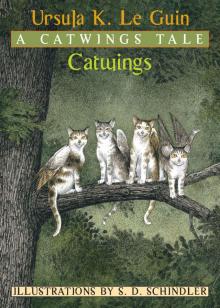 Catwings
Catwings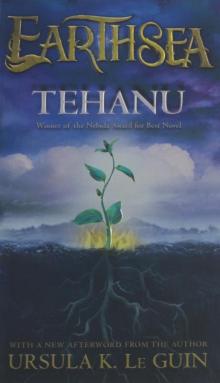 Tehanu
Tehanu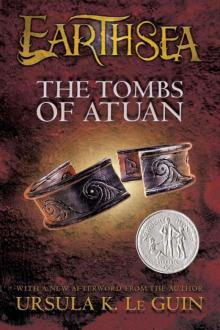 The Tombs of Atuan
The Tombs of Atuan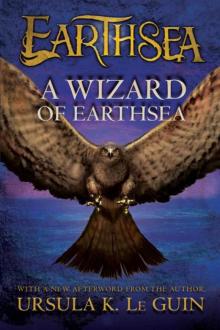 A Wizard of Earthsea
A Wizard of Earthsea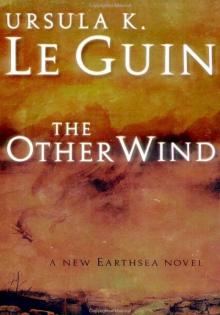 The Other Wind
The Other Wind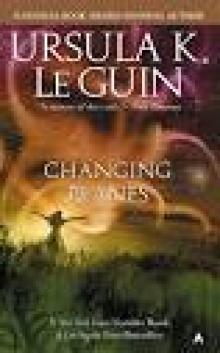 Ursula K. Le Guin
Ursula K. Le Guin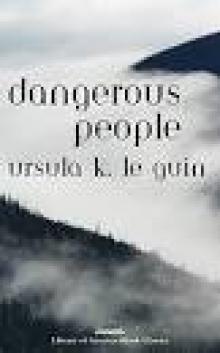 Dangerous People
Dangerous People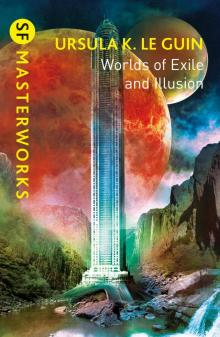 Worlds of Exile and Illusion: Rocannon's World, Planet of Exile, City of Illusions
Worlds of Exile and Illusion: Rocannon's World, Planet of Exile, City of Illusions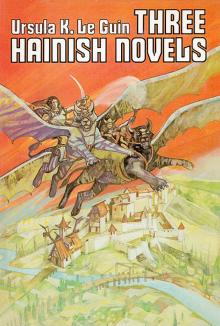 Three Hainish Novels
Three Hainish Novels The Left Hand Of Darkness (SF Masterworks)
The Left Hand Of Darkness (SF Masterworks)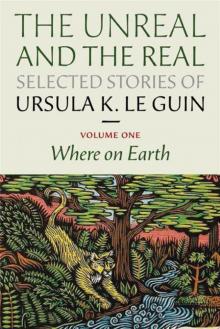 The Unreal and the Real - Vol 1 - Where On Earth
The Unreal and the Real - Vol 1 - Where On Earth The Visionary
The Visionary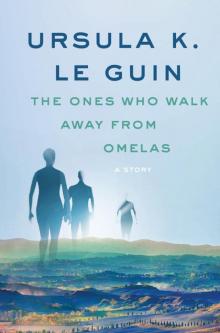 The Ones Who Walk Away from Omelas
The Ones Who Walk Away from Omelas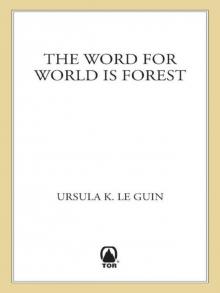 The Word for World is Forest
The Word for World is Forest Always Coming Home
Always Coming Home The Unreal and the Real - Vol 2 - Outer Space, Inner Lands
The Unreal and the Real - Vol 2 - Outer Space, Inner Lands Malafrena
Malafrena The Lathe of Heaven
The Lathe of Heaven Five Ways to Forgiveness
Five Ways to Forgiveness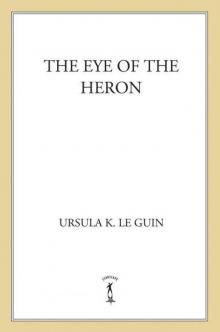 The Eye of the Heron
The Eye of the Heron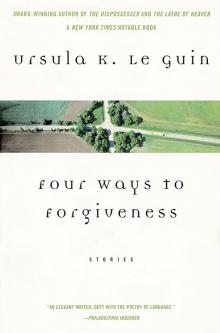 Four Ways to Forgiveness
Four Ways to Forgiveness Powers
Powers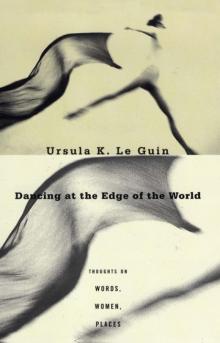 Dancing at the Edge of the World
Dancing at the Edge of the World Very Far Away from Anywhere Else
Very Far Away from Anywhere Else Voices aotws-2
Voices aotws-2 The New Atlantis
The New Atlantis The Unreal and the Real, Selected Stories of Ursula K. Le Guin Volume 1: Where on Earth
The Unreal and the Real, Selected Stories of Ursula K. Le Guin Volume 1: Where on Earth The Telling
The Telling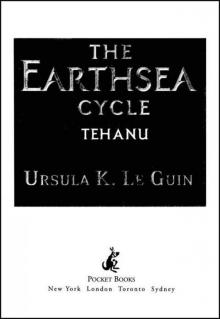 Tehanu (Earthsea Cycle)
Tehanu (Earthsea Cycle) Nine Lives twtq-9
Nine Lives twtq-9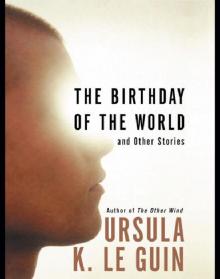 The Birthday of the World and Other Stories
The Birthday of the World and Other Stories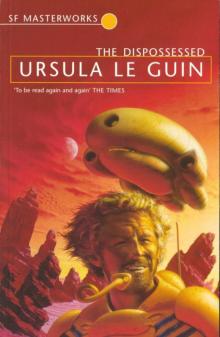 The Dispossessed
The Dispossessed Changing Planes
Changing Planes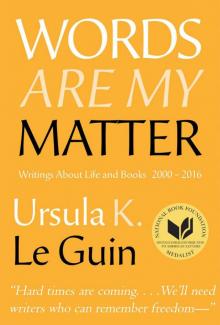 Words Are My Matter
Words Are My Matter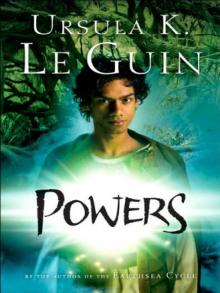 Powers aotws-3
Powers aotws-3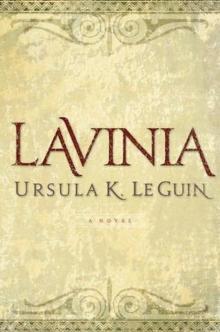 Lavinia
Lavinia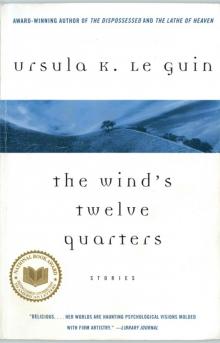 The Wind's Twelve Quarters
The Wind's Twelve Quarters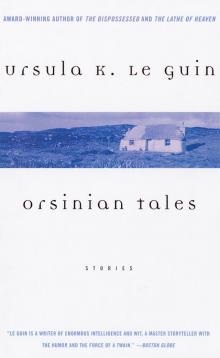 Orsinian Tales
Orsinian Tales Gifts aotws-1
Gifts aotws-1 Coming of Age in Karhide
Coming of Age in Karhide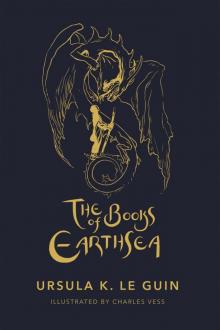 The Books of Earthsea: The Complete Illustrated Edition
The Books of Earthsea: The Complete Illustrated Edition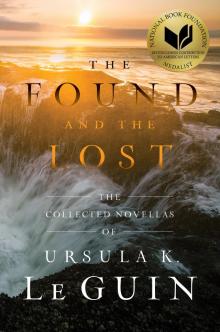 The Found and the Lost
The Found and the Lost No Time to Spare
No Time to Spare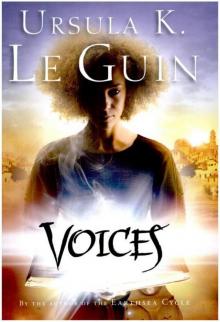 Voices
Voices The Wild Girls
The Wild Girls Old Music and the Slave Women
Old Music and the Slave Women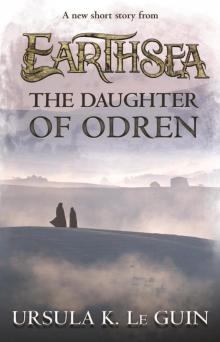 The Daughter of Odren
The Daughter of Odren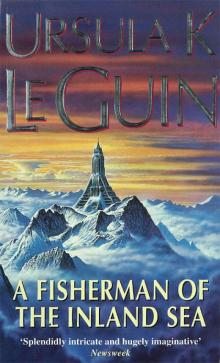 A Fisherman of the Inland Sea: Stories
A Fisherman of the Inland Sea: Stories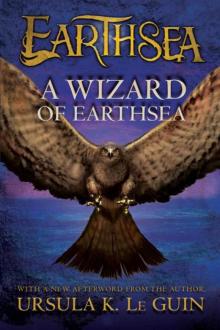 A Wizard of Earthsea (The Earthsea Cycle)
A Wizard of Earthsea (The Earthsea Cycle)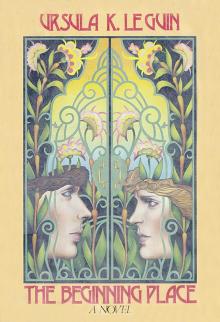 The Beginning Place
The Beginning Place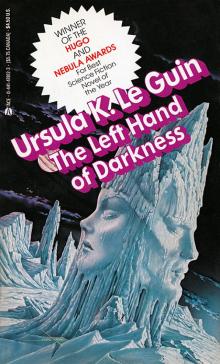 The Left Hand of Darkness
The Left Hand of Darkness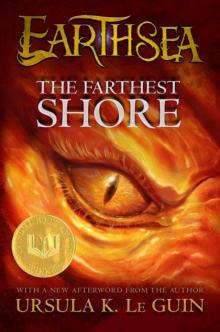 The Farthest Shore (Earthsea Cycle)
The Farthest Shore (Earthsea Cycle) The Matter of Seggri botw-2
The Matter of Seggri botw-2